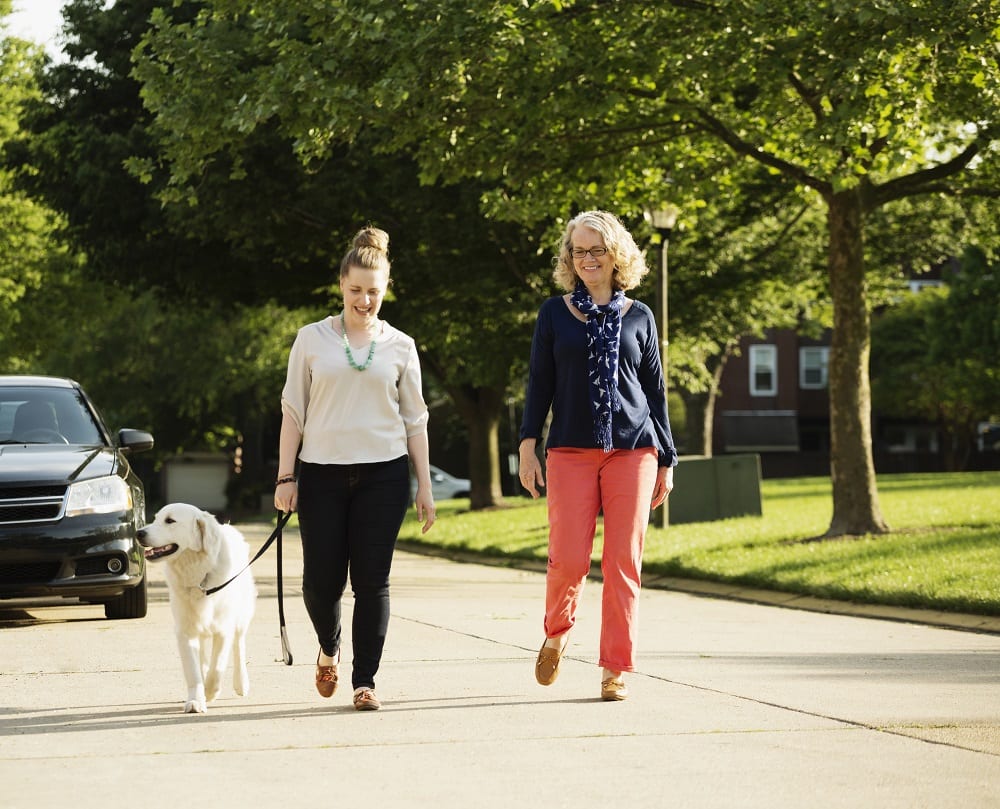Column No.1, October 2018: Answering all your new home-related questions and concerns

Photo: GettyImages
“I built a house and I’m about to move into my new community. I don’t know anyone who lives there. Do you have any suggestions for getting to know my neighbors?” —Simon P.
For those of you like Simon seeking answers to this question, a Google search will yield some weird ideas that I do not recommend. I’m sorry to go negative right out of the gate, but hosting a party for neighbors you’ve never met — one of the most frequently suggested ideas I found online — does not seem like a one-size-fits-all solution for making connections in your new neighborhood.
Listen to Your Heart
But maybe hosting a “meet your new neighbors” party was not meant for everyone. Like most major life changes, a move is very personal, and the way you handle that move will differ from anyone else. The way you meet your neighbors will also differ. Maybe you are the kind of person who likes to meet and greet everyone all at once by having a big bash. Maybe you prefer to nest first and get to know your neighborhood slowly.
Because moving is considered one of life’s top five stressors, I think self-care is the key. When your life is in a state of upheaval, set the stage for serenity by listening to your inner voice. If that voice wants to settle in quietly, don’t rush yourself. Unpack as you can and poke your head out to say hello when you’re good and ready. But if your inner voice wants to make a splash, have that party.
Still, it’s a mistake to think that getting settled is primarily being social. Getting to know your new neighborhood involves forming new routines, establishing your lifestyle and maybe even letting go of some bad habits. Yes, it is nice to become friends with your neighbors, and if you have awesome neighbors, that’s likely going to happen naturally.
Animal Instincts
Do you have a dog? Notice how your dog wiggles his way into the neighborhood. His is a major sensory experience, sniffing out the territory, ears perked up as he listens to the sounds of this new neighborhood. Without actually talking to anyone, he’s getting the lay of the land.
Consider carving out some sensory experiences for yourself, observing the community that you’re now a part of and learning everything you can. You don’t need to know a soul to familiarize yourself with your new neighborhood. There’s much more to a neighborhood than the nearby cafés and schools.
Here’s a checklist to help you expand your range of observations:
- What birds roost in the area? When are they active and will they be pooping on your patio? Once you know about the birds dwelling in your trees, you’ll be able to appreciate your natural surroundings more.
- Are there other local animals you need to be aware of, like coyotes, turtles, foxes or bears? Some wildlife is friendly — I’ll never forget the two-foot tortoise that ambled past my back door last year — while others are foes. If you have a pet that’s allowed to wander outdoors, it’s good to keep an eye on potential threats.
- Do certain plants seem to thrive given your neighborhood’s light conditions, soil quality and rainfall levels? Take a walk and check out your neighbors’ yards as well as landscaping in common areas. You might get ideas on what you want to add to your garden.
- Are certain times of day noisier or quieter? Is the noise related to traffic? Are there other noises you need to adjust to? If you’re in an urban area or close to a highway, you’ll come up with strategies for blocking out bothersome noises.
- Which are the most scenic routes around your neighborhood? Is there a jogging path that stands out as ideal? If so, you have an opportunity to boost your fitness by making exercise more a part of your everyday life. Where can you picture yourself taking a long, lazy stroll? Going for a walk with your family after Sunday dinner is a great way to grow your relationships with both your family and your community.
- Are there one-way streets in your community? Multiple entrances and exits? Separate entries for visitors and homeowners? Make sure you know several routes to take in case of an emergency.
- Has a Neighborhood Watch group been established? Check postings in common areas so you’re in the know. Also, search online for a local crime map and sign up for NextDoor, a private social network that connects you with your neighborhood.
Now that you’re on your way to making your neighborhood a comfort zone, time and friendships will take you the rest of the way. Taking your dog for walks will help you connect with other dog lovers. Stopping to chat with your neighbor about her flower bed will spark conversations. The community pool might become a hub for get-togethers. Your new roots will unfurl and, Simon, before a year has passed, you’ll feel like you’ve always been there.

Sarah Kinbar is a writer and editor with a passion for design and images. She was the editor of Garden Design magazine, curating coverage of residential gardens around the globe. As the editor of American Photo, Kinbar worked with photographers of every genre to create a magazine that told the story of the photographer’s journey.
She has been writing about architecture, landscape design and new-home construction for NewHomeSource since 2012. During that time, she founded Kinship Design Marketing, a boutique agency that provides content for website redesigns, blogs, inbound marketing campaigns and eNewsletters.

 These Six Dining Rooms Will Complete Your Life
These Six Dining Rooms Will Complete Your Life